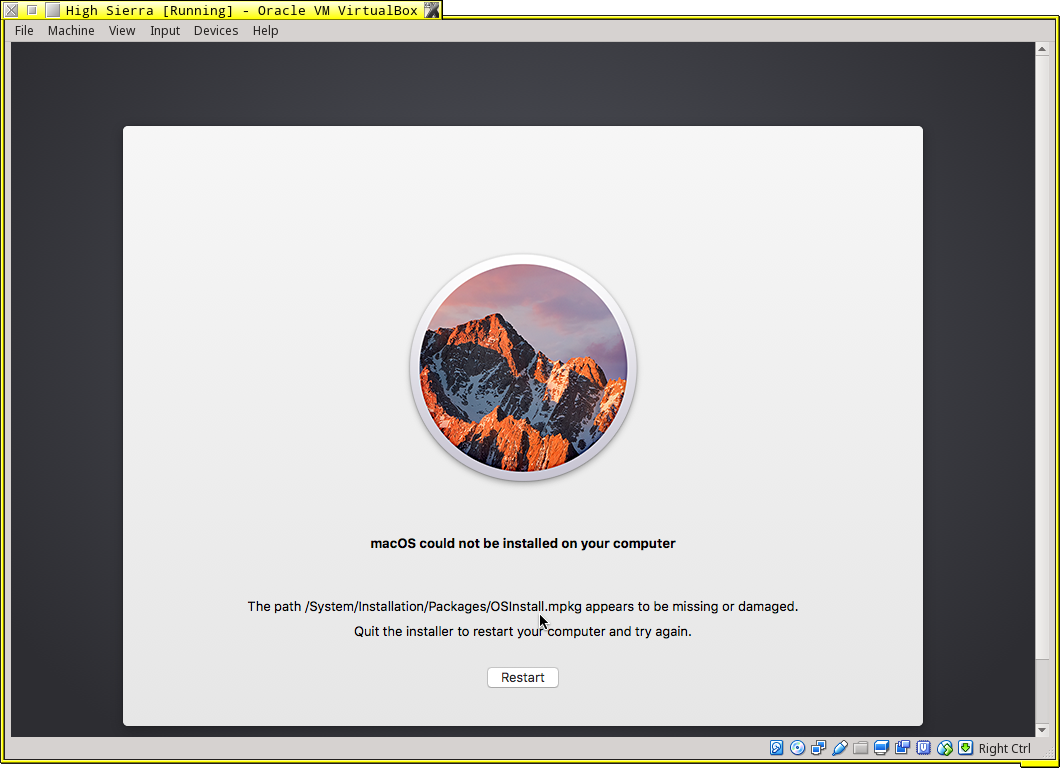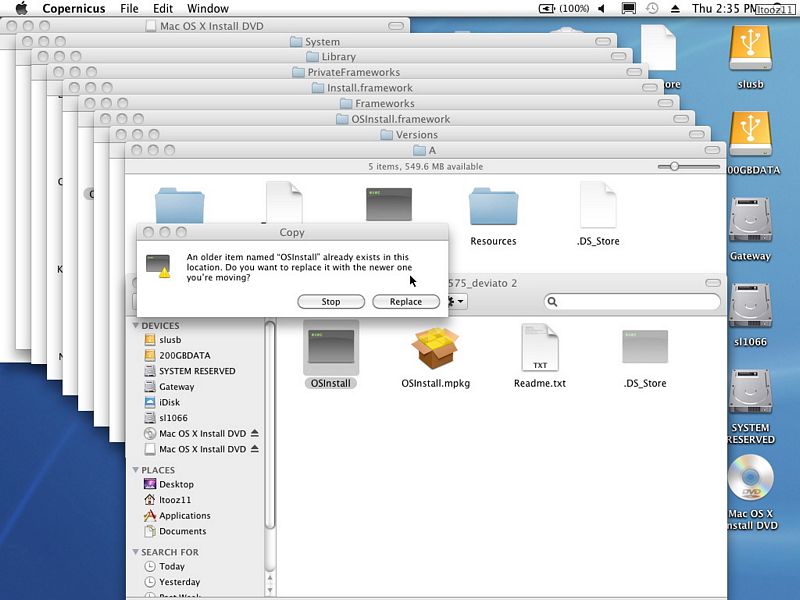
- #Osinstall.mpkg patched for mbr how to
- #Osinstall.mpkg patched for mbr mac os x
- #Osinstall.mpkg patched for mbr install
- #Osinstall.mpkg patched for mbr drivers
- #Osinstall.mpkg patched for mbr driver
įor those who are getting Kernel Panics try to boot in 32 bit Mode + Safe mode using following Boot flag. Tip: In case you need quick assistance, contact me on Twitter: 1.Īs promised, I added this section to give out better troubleshooting in case of any issues you might have come across. Now Reboot and Fall in Love with the Snow Leopard – Kextcache -v 1 -t -m /System/Library/Caches//Startup/Extensions.mkext /System/Library/Extensions/ Reboot and go to Single User mode by typing the flag -x32 –s
#Osinstall.mpkg patched for mbr driver
If you added any driver kext to / New/System/Library/Extension, This step will rebuild the Extensions.mkext cache while booted in Snow Leopard.

Click add device and you will see some numbers, copy them.Īdd the following XML to your in /New/Extra. Launch EFiStudio and look for your Display/Video Card through the drop down menu. Now, Move the Extensions folder and the extension.mkext back to “/Snow/Extra “ “Kext utility” will actually repair your permission and generate a new Extension.mkext. Place all the “kext files ” in “/New/Extra/Extensions”, and copy the Extensions folder in Extra to the desktop, and drag it to “Kext Utility “. This assumes that you had downloaded all Kexts that might be needed for your system’s compatiblity. Select “Darwin/Mac OS X” in Operating System, then select DSDT Patch in options and before hitting the Run DSDT Patcher button make sure to change the destination to “New” Drive. Continue to Step 6.įrom the downloaded Tools, Open the DSDT Patcher. After replacing the boot file again launch the “ShowAllFiles “ and click Hide. Then Navigate to the root of your New Drive and delete the “boot” file you see and replace it with the boot file included System Downloads. Launch the “ShowAllFiles “ (included in “Tools”) and click Show.
#Osinstall.mpkg patched for mbr install
Either install the “ ” over your current 10.5.x Installation then reboot and do the process again (from Step 1). If you are using PCEFI bootloader on your existing OSx86 system then “Chameleon v2 Snow Leopard Support.pkg” will NOT serve the purpose. IMPORTANT – If Chameleon 2.0 gives you Kernel Panics then try reinstalling with Chameleon 1.0 Note – If Snow Support Package Shows an Error, Then Follow Step 5.

Unzip the Chameleon Bootloader, Install the “ “ and then “Chameleon v2 Snow Leopard Support.pkg “ to the New Drive.
#Osinstall.mpkg patched for mbr drivers
and onwards, we will install Bootloader and some important drivers (KExts), Patch DSDT and Install certain important system files, so, bear it with me. De-select all the stuff you don’t need like Printers, Languages, other drivers etc. Go through the options and select your New drive. If you need to install on MBR, then google for Modified OSInstall.mpkg for MBR, download modified one and replace with default one. Note– Default “OSInstall.mpkg” works for GUID partitioned drive only. In the next window, locate the “OSInstall.mpkg ” and double click this package file to start Snow leopard Installation. Here, type “Mac OS X Install DVD/System/Installation/Packages/”, and Go. A small window will appear on top of the existing window. Next, Installer window will pop-up, click on the free space anywhere in window and press key sequence – CMD + Shift + G. Now set yourself as the owner by running the following at drive’s Root. Partition your New disk with GUID partition scheme. Make sure you have connected your second “New” Hard Disk or Flash Drive.īoot into Leopard, launch Disk Utility from Spotlight.
#Osinstall.mpkg patched for mbr mac os x

Lot’s of sites have been consulted to prepare this guide. In the following tutorial we will show you how can you can Install the latest Snow Leopard (build 10A432 GM release, the Retail version) on your PC which has existing MAC OS X 10.x.x running.
#Osinstall.mpkg patched for mbr how to
If you are looking for Installation from USB: Install Snow Leopard on PC using USB, or virtualization: How to Install Snow Leopard on VMWare, Install Snow Leopard on VirtualBox


 0 kommentar(er)
0 kommentar(er)
